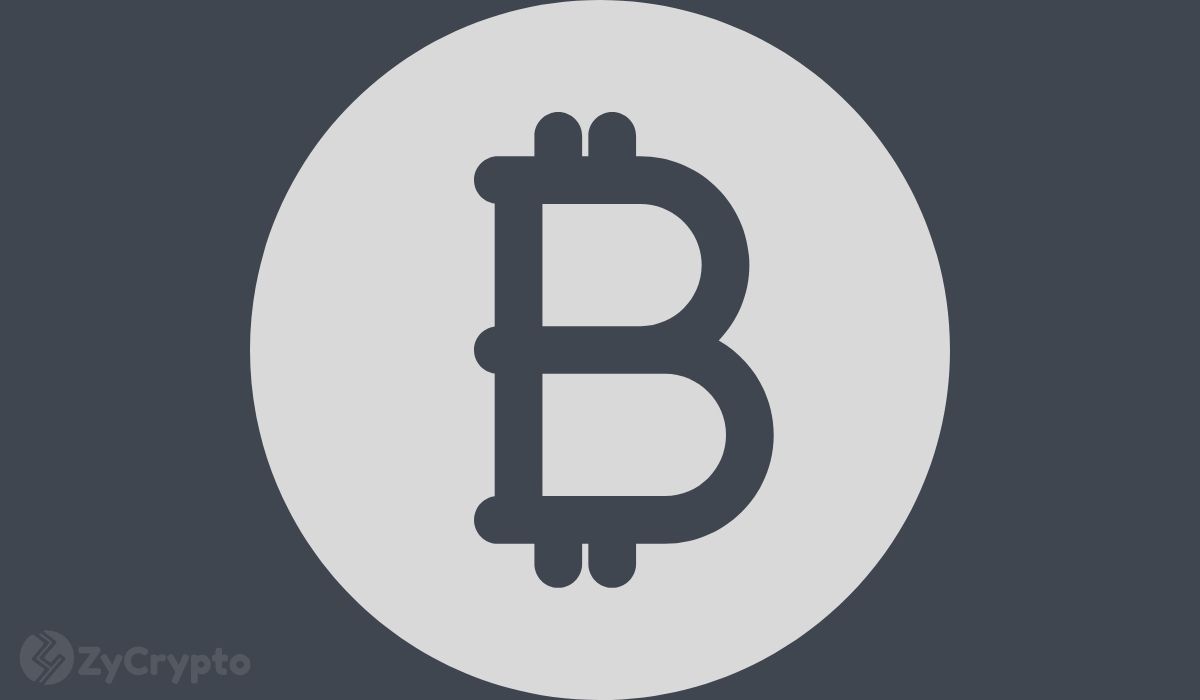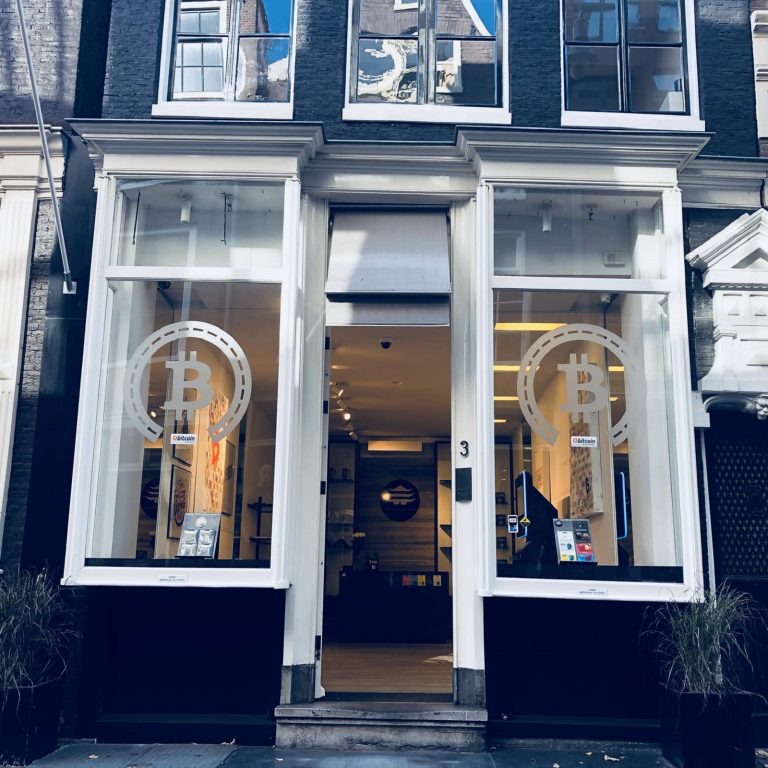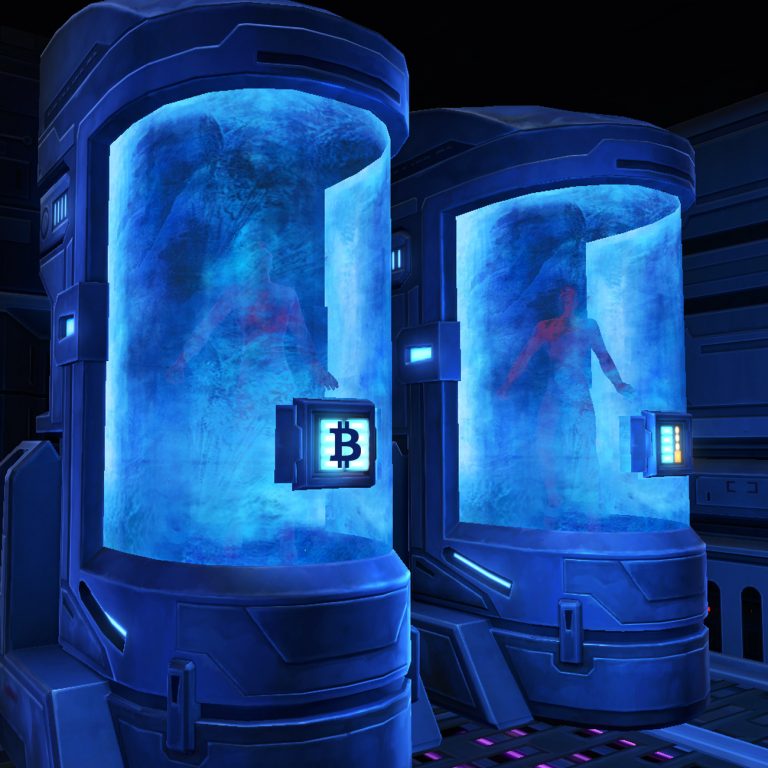2022-3-2 03:09 |
Table of Contents
Blockchain currency is revolutionizing money and we’ve witnessed a proliferation of digital cash companies and codebases since Satoshi Nakamoto unveiled his cryptocurrency in 2008.
Bitcoin started the trend and is still the leader. However, some of the other cryptocurrency that hit the scene within the last couple of years shows real promise with their block chain vastly improved and upgraded over Bitcoin’s very own.
Most people are at least somewhat familiar with Bitcoin even if they do not accurately understand how it works. However, once they begin to get involved with cryptocurrency, they may be surprised to learn that there are hundreds of cryptocurrencies (a.k.a altcoins) out there besides Bitcoin (CoinMarketCap listed more than 800 altcoins at the time this guide was written).
Altcoins are an intriguing facet of the cryptocurrency landscape. However, they are not for everyone and Altcoin beginners often have many questions. This guide will provide a brief overview of altcoins to help newcomers decide whether or not to invest in them.
Definition of ‘Altcoin’
[x_line]
The word “altcoin” is an abbreviation of “Bitcoin alternative.” This means that the word „altcoin“ describes every single cryptocurrency except for Bitcoin, and Altcoins are referred to as Bitcoin alternatives since most altcoins hope to either replace or improve upon at least one Bitcoin component.
There are hundreds of altcoins, and more appear every day. Most altcoins are little more than Bitcoin clones and they do not survive for very long. They only change minor features, such as its hashing algorithm, distribution method, or transactions speed. One exception is Litecoin, which has branded itself as “silver to Bitcoin’s gold.” The reason for that is that, in addition to using a different hashing algorithm than Bitcoin, Litecoin has a much higher number of currency units.
It is important to note that some altcoins innovate by experimenting with useful characteristics Bitcoin does not offer. For instance, Ripple serves as a protocol users can employ to make inter-currency payments with ease, BitShares describes itself as “a fair version of Wall Street,” and Darkcoin hopes to provide a platform for completely anonymous transactions. Some altcoin ecosystems, such as Mastercoin and CounterParty, even utilize the Bitcoin blockchain to secure their platform.
Many Bitcoin enthusiasts argue that altcoins are totally unnecessary. Also, some say that, because they cannot rival the infrastructure Bitcoin boasts, altcoins will not succeed. However, altcoins have a significant role. Altcoins allow developers to experiment with unique features, and while it is true that, if the developers or community desires, Bitcoin can copy these features, fully-functioning altcoins are much better “cryptocurrency laboratories” than Bitcoin’s testnet. Moreover, one of Bitcoin’s most prominent goals is decentralization, and altcoins further decentralize the cryptocurrency community. Finally, altcoins give Bitcoin healthy competition and they give cryptocurrency users alternative options and forces Bitcoin’s developers to remain active and continue innovating. Users can adopt an altcoin if they do not feel that Bitcoin satisfies their digital desires. Also, the Bitcoin developers would have to adopt the features the community desired or risk losing its place as the preeminent cryptocurrency if enough users left Bitcoin for a particular altcoin.
What Was the First Altcoin?[x_line]
Namecoin was the first altcoin and it was created. Namecoin’s primary purpose is to decentralize domain-name registration, which makes internet censorship much more difficult. However, it also functions as a currency.
Bitcoin is still leading the virtual currency pack, even with many close competitors. Newer and more innovative versions are getting launched. They offer modifications in areas like Proof of Stake, privacy, transaction speed, DNS resolution and more. A few altcoins have become popular and the rest of them are lesser-known.
Here are some of the top altcoins in no particular odder (but they are mostly all in top 50 by their market cap):
Ethereum Ethereum Classic Factom Golem Stratis Siacoin Dash Monero Litecoin Ripple[thrive_leads id=’226′]
Ethereum[x_line]
Ethereum was created by math prodigy Vitalik Buterin. It is second only to Bitcoin in the hierarchy of cryptocurrencies and, like Bitcoin, Ethereum is a distributed public blockchain network. There are some important technical differences between the two. However, the most significant difference to note is that Bitcoin and Ethereum differ substantially in purpose and capability.
Bitcoin offers one particular application of blockchain technology. It is a peer to peer electronic cash system that enables online Bitcoin payments. The bitcoin blockchain is used to track ownership of digital currency (bitcoins). On the other hand, the Ethereum blockchain focuses on running the programming code of any decentralized application.
Blockchain applications were designed to do a very limited set of operations before the creation of Ethereum. For instance, Bitcoin and other cryptocurrencies were designed exclusively to operate as peer-to-peer digital currencies.
Developers faced an issue. They could either expand the set of functions offered by Bitcoin and other types of applications, which is very time-consuming and difficult. Or, they could develop a new blockchain application and a completely new platform as well. Vitalik Buterin, Ethereum’s creator, developed a new approach because he recognized this predicament.
The Ethereum Virtual Machine (EVM) is Ethereum’s core innovation. It is a Turing complete software that runs on the Ethereum network and enables anyone to run any program, regardless of the programming language given enough time and memory.
The process of creating blockchain applications is much simpler and efficient than ever before thanks to the Ethereum Virtual Machine. Ethereum enables the development of potentially thousands of different applications all on one platform, instead of having to build an entirely original blockchain for each new application.
Ethereum organization announced the Enterprise Ethereum Alliance (EEA) in February 2017. The EEA aims to develop enterprise-focused solutions with the open-source Ethereum as a basis but that are more privacy-oriented. Conversely, the goal is to create a positive feedback loop which leads to improvements of the public blockchain protocol as well.
There are major Fortune 500 companies that are all currently exploring Ethereum. Here are only few of them: Samsung, BP, Microsoft, JP Morgan, and Intel.
Where to purchase: Changelly Bitpanda CEX.io Coinbase
Ethereum Classic
[x_line]
The DAO was one of the most promising things about Ethereum. The DAO was a complex Smart Contract with many features and its launch went smoothly and proposals were created and voted on. The DAO should have allowed companies to make proposals for funding. However, during the coming weeks security problems were raised and there was a big community call for a moratorium. However, it was not implemented and most of the security problems were not addressed fast enough.
Members of the Ethereum community noticed on the 18th of June that funds were being drained from The DAO and the overall ETH balance of the smart contract was going down. In the first few hours, a total of 3.6m Ether (worth about $70M at the time) was drained by the hacker. The attack happened because of an exploit found in the splitting function, and even though the hacker could have continued to drain The DAO, he stopped for unknown reasons.
It’s important to note that this bug did not come from Ethereum itself. It came from this one application that was built on Ethereum. The code written for The DAO had multiple bugs, and one of them was the recursive call exploit. Comparing Ethereum to the Internet and any application based on Ethereum to a website is another way to look at this situation – It doesn’t mean that the Internet is not working if a website is not working. It simply means that one website has an issue.
The Ethereum community and team quickly took control of the situation. To deal with the exploit, they presented multiple proposals. Ether holders, who had to send a transaction to a voting platform, voted on and approved the hard fork proposal in order to reach a quick consensus. The majority of people (89%) voted for the Hard-Fork. The proposal took place during the 1920000th block (20th July 2016) and this was when Ethereum Classic was born.
Ethereum Classic is not a new cryptocurrency. It is a split from an existing cryptocurrency, Ethereum. Both blockchains are identical in every way up until block 1920000 where the hard-fork to refund The DAO token holders was implemented. This means that all the balances, transactions, and wallets that happened on Ethereum until the hard-fork are still valid on the Ethereum Classic Blockchain. The blockchains were split in two and act individually after the hard-fork.
When the hard-fork was implemented, some users did not agree with it. They decided not to upgrade their software and to continue mining on the blockchain that did not have this implementation. The hard-fork creates an incompatibility between the new version and previous ones. That’s why the users that decided to remain on the “original” blockchain, have diverged into their own blockchain.
China has been very acceptive of Ethereum Classic recently, and Ethereum Classic is now traded by all major exchanges in China.
Where to purchase: Changelly
Factom
[x_line]
Factom stores the world’s data on a decentralized system and it is the first usable blockchain technology to real-world business issues by providing an unalterable record-keeping system. Factom is a distributed, decentralized protocol running on top of Bitcoin, which means that nobody controls it. People all over the world run this software to make the protocol work and the software is open source, and anyone is free to use it for any purpose.
Factom’s distributed ledger technology creates a data layer on top of the Bitcoin blockchain, and in this way secures millions of real-time records in the blockchain with a single hash using cryptographic isolation.
Factom can be used by governments and businesses for documenting their information so that it cannot be modified, backdated or deleted. Factom’s technology decentralizes record keeping by providing complete transparency and ensuring that the integrity of stored data remains intact. At the same time, it also maintains user privacy in an increasingly digital world.
Where to purchase: Changelly
Golem
[x_line]
Golem is a platform built on a peer-to-peer network and it is called the “worldwide supercomputer,” to which anyone can contribute and from which anyone can buy computation. It sources computing infrastructure in a decentralized manner to create a global market for computation.
Today, the cloud computing space is dominated by giants including IBM, Microsoft, and Amazon. This results in pricing inefficiencies characteristic of oligopolistic markets. Golem’s market aims to disrupt this status quo and reduce such inefficiencies by providing near complete information. This will make complex applications such as computer-generated imagery (CGI) rendering, machine learning, and big data analytics more accessible.
The platform will also provide value in the form of a Transaction Framework that provides flexibility in the way such software is monetized, along with an Application Registry that enables anyone to deploy software to the network. Together, these two components aim to create an environment conducive to quick, community-driven innovation and Golem hopes that centralized providers will utilize the network to adopt and pass on the aforementioned efficiencies to their customers.
Where to purchase: Changelly
Stratis
[x_line]
Stratis aims to make blockchain easier for everyone to understand and the project offers simple and affordable end-to-end solutions for development, testing and deployment of native C# blockchain applications on the .Net framework.
The enterprise development platform is one aspect of the Stratis project. It is quite complicated these days to get involved in building blockchain-based apps, but the team has developed an accessible solution which takes away a lot of headaches connected with building blockchain applications altogether. Moreover, this cryptographic token fuels the blockchain and acts as a value transfer vehicle in our marketplace.
How Stratis focuses on native C# and.NET applications is one thing that makes Stratis stand out from other blockchain platform. Stratis wants to make the transition for software developers a lot smoother, rather than coming up with a completely new coding language. Moreover, the proprietary blockchain offered by the platform uses the latest advances in security and stability. So far, Stratis partnered with leading blockchain partners, including Changelly, Microsoft Azure, and Ledger.
Where to purchase: Changelly
Siacoin
[x_line]
The idea for the project was conceived at HackMIT back in 2013. The HackMIT is a hackathon hosted at the MIT (the Massachusetts Institute of Technology). The idea is very simple. It allows anyone to rent out their storage space and in return reward them for their contribution.
Cloud storage services are currently mostly centralized and the data is stored on a third party server. However, with Siacoin each user would contribute their own share of resources, and in this way the storage would be decentralized.
Some say that there are plenty of decentralized storage projects. So the question is: „Is Sia any different?” It is true that Sia has its competitors. Maidsafe and Storj are just a few of them. However, the thing that sets Sia apart lies in the intricate details relating to maintaining the decentralized ecosystem, e.g. the Sia blockchain has the ability to create a smart contract that would ensure the host is paid for their services.
Sia also allows companies to get involved and host their own private decentralized cloud and sell that as a service to their customers, which drastically decreases hosting and storage costs.
Sia provides the platform that has users paying for storage and providers running their own private decentralized cloud and this is the beginning of “hosting of the future” in which is not completely reliant on central servers anymore.
You can give Sia a try by visiting their website and downloading the wallet software, and you will be instructed to create a wallet once the wallet is up and running. Once that is done, simply buy storage space with Siacoins. After that, you can begin uploading files to host on the network in no time.
Furthermore, you can become a hoster yourself if you want to contribute your personal harddrive space to other clients. Select the storage folder you would like the files to get sent to and let the peers know you area available for file hosting by clicking the announce button. The files will be encrypted for obvious reasons. This means that you won’t be able to tell what kind of data users are hosting on your machine.
Where to purchase: Changelly
Dash[x_line]
Dash (originally known as Darkcoin), a combination of the words “digital” and “cash,” is the Internet’s cash-in-hand. Dash is very fast and its transactions are instant. Its Instasend and Privasend features have even more functionality for a bit more of a fee. This makes it perfect in a retail setting. InstantSend payments confirm in less than a second, while Bitcoin’s transactions can take up to an hour (or if you are out of luck, up to 24hrs) to process.
Dash is a more secretive version of Bitcoin and offers more anonymity since it works on a decentralized mastercode network that makes transactions almost untraceable. Dash is launched in January 2014, and in a short span of time it experienced an increasing fan following. Evan Duffield created and developed this cryptocurrency. Dash would be among the best options at the moment if people started using it only for the purpose of sending and receiving digital cash peer-to-peer payments.
Dash can be mined using a CPU or GPU, but the problem is that GPU/CPU mining is no longer cost effective, because, in order to mine, you’ll need specific hardware, computers known as ASICs to complete Dash’s proof-of-work puzzles.
Where to purchase: Changelly Bitpanda
Monero
[x_line]
Monero is the most prominent example of the cryptonite algorithm and it is geared toward those who desire greater anonymity. Every transaction is documented in the blockchain and the trail of transactions can be followed if you use Bitcoin, so Monero was invented to add the privacy features Bitcoin is missing. The cryptonite algorithm was able to cut through that trail, with the introduction of a concept called ring-signatures. Due to Monero’s leveraging of ring signatures, transactions are completely untraceable. Sadly, due to Monero’s emphasis on privacy, it has seen adoption by the darknet and other criminal organizations.
The first implementation of cryptonite, Bytecoin, was heavily premined. That’s the reason why the community rejected it. The first non-premined clone of bytecoin was Monero, and it raised a lot of awareness. There are several other incarnations of cryptonote with their own little improvements. However, none of it did ever achieve the same popularity as Monero.
Where to purchase: Changelly
Litecoin
[x_line]
Litecoin was one of the first cryptocurrencies after Bitcoin. In an effort to improve upon Bitcoin, former Google engineer Charles Lee created Litcoin (he recently returned from Coinbase to head Litecoin once again), and it was a real innovation, perfectly tailored to be the smaller brother of Bitcoin. Namely, the speed to generate a new block is improved dramatically and transactions are much faster. Block transactions are 7.5 minutes faster than Bitcoin. It is important to note that by the same token this speed makes Litecoin’s Blockchain bigger and more prone to producing orphaned blocks.
Litecoin also features a larger amount of token and a new mining algorithm (Scrypt). Litecoin facilitated the emerge of several other cryptocurrencies which used its codebase but made it, even more, lighter and the examples are Feathercoin and Dogecoin.
A new generation of GPU mining was spawned by scrypt-based mining, and that new generation still exists today.
The Litecoin blockchain is becoming an experimental playground preceding Bitcoin these days. Despite having no blocksize congestion like Bitcoin, scaling solutions, such as Layer 2 protocols and Segregated Witness, are being tested in production on its live blockchain before ever being integrated into Bitcoin.
Litecoin’s active trading volume is still very high. It is usually second or third overall in the cryptocurrency space. Many exchanges now trade Litecoin.
Where to purchase: Changelly Bitpanda Coinbase
[thrive_leads id=’226′]
Ripple[x_line]
Ripple is one of the most hated cryptocurrency project by the community. Ripple attracted a great deal of venture capital during its inception, and managed to pull in upwards of $50 millions from banking institutions, gathering an amazing $90 millions in total funding.
Ripple has a native cryptocurrency – XRP. However, it is more about a network to process IOUs than the cryptocurrency itself. XRP, the currency, doesn‘t serve as a medium to store and exchange value. It serves more as a token to protect the network against spam.
Every XRP-token is created by Ripple Labs (company that runs the Ripple network), and is distributed by them on will. According to its website, the goal of the ripple system is to enable people to break free of the “walled gardens” of financial networks – i.e., PayPal, banks, credit cards and other institutions that restrict access with fees, process delays, and charge for currency exchanges.
Banks loves Ripple, and there are currently over 100 banks that are utilizing this altcoin to process transactions.
Where to purchase: Changelly
Where Can I Get Altcoins?There are a variety of ways to get altcoins, but accepting them as payment for goods or services is the most basic way to get altcoins.
Altcoins can also be traded for on cryptocurrency exchanges. Most exchanges use Bitcoin as an intermediary (although there are a few that include fiat pairs). This means that, if you do not already own bitcoins you will need to purchase some before you can trade for altcoins. Some of the most-trafficked exchanges include Binance, Bitfinex, Poloniex, Liqui, BTC38 (Chinese-only), Cryptsy, MintPal, Bittrex, and BTER.
To increase exposure of their coin and entice new users to join their communities, many altcoin communities also sponsor giveaways. If you do not have marketable skills or are low on funds, this is a great way to acquire coins.
Should I Invest in Altcoins?
It is important to note that all cryptocurrency investments carry a great deal of risk due to how recent cryptocurrency was invented and how rapidly the landscape changes. Bitcoin is by far the most stable cryptocurrency. However, even Bitcoin exhibits price volatility on a regular basis.
Altcoins are exponentially more volatile. Altcoin markets are highly prone to price manipulation because they have such low market caps. To build hype and cause the price to skyrocket, wealthy traders often inject large amounts of capital into low-priced coins. These traders sell their coins on exchanges at a massive profit, once the price has risen considerably. This method is known as a “pump and dump” and it hurts many gullible investors in the process. This hurts greedy traders who did not take the time to do their homework. It also often proves to be the breath of an altcoin’s brief lifespan.
You should focus on long-term investments in coins you believe have immense potential and exhibit overall health to avoid losing all your money in a pump and dump. Generally, healthy altcoins have developers who proactively improve the coin’s source code, exhibit high liquidity, and possess strong communities. These three important factors are statistically analyzed thanks to the CoinGecko’s comprehensive coin metric analysis algorithm. This algorithm also ranks coins according to overall strength.
It is important to remember some basic tenets of investing if you do choose to invest in altcoins. You should avoid the hype that coin communities propagate and invest only in coins you have researched. Investors have an agenda. For this reason, you should not take their word at face value. It is unwise to invest in something you do not understand and making an ill-informed investment is the first step to losing your hard-earned money. Before you attempt to become a high-volume, short-term trader, you should take the time to research the coins you are considering for long-term investments, and research day-trading. Most importantly, you should never invest more than you can afford to lose, because far too many people have lost their life savings by centralizing them in volatile investments.
[thrive_leads id=’226′]
The post Altcoins: All You Wanted to Know About Bitcoin’s Contenders appeared first on CaptainAltcoin.
Similar to Notcoin - TapSwap on Solana Airdrops In 2024
Bitcoin (BTC) íà Currencies.ru
|
|





















